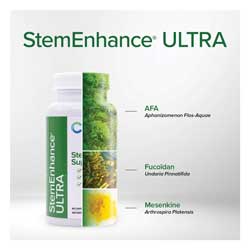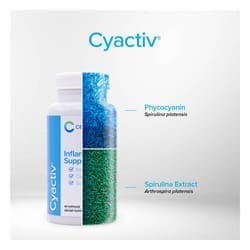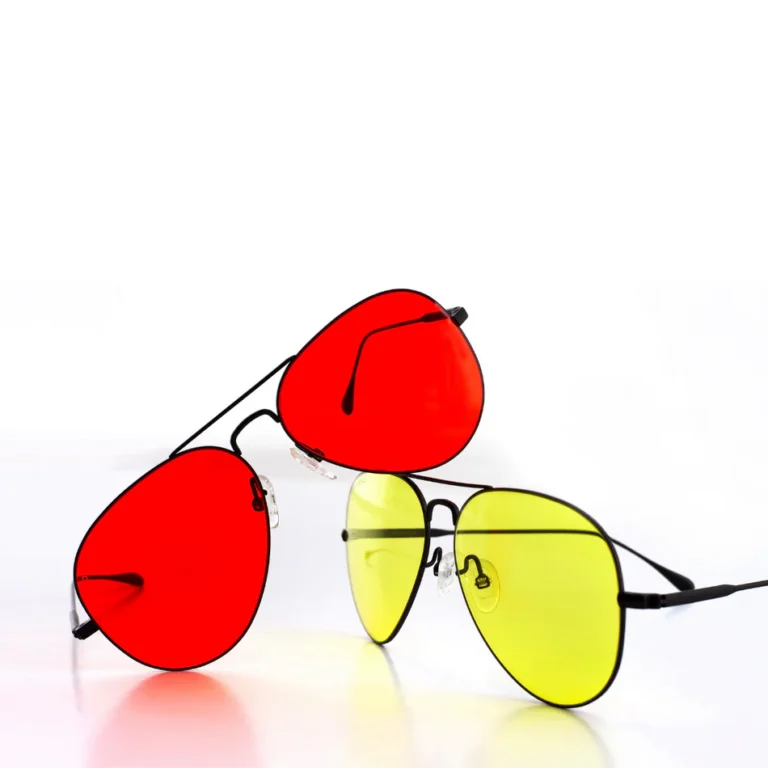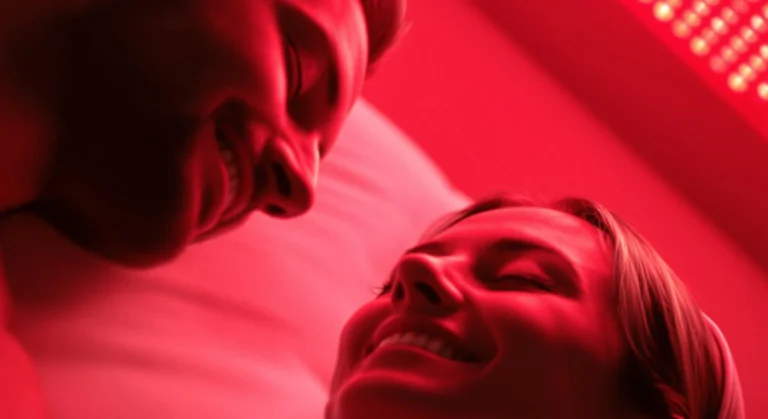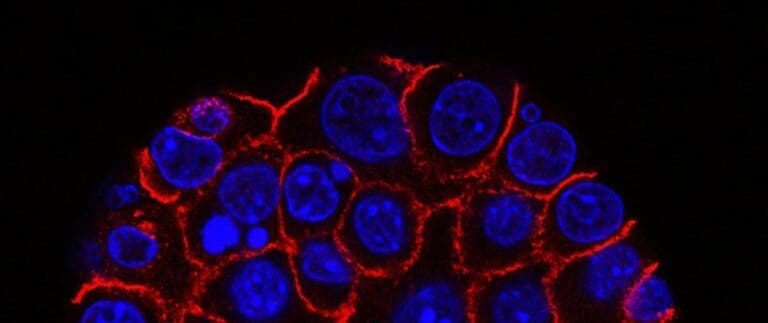The Blue Brain Effect: Why StemEnhance Ultra and Cyactiv May Be Better Than Methylene Blue for Red Light Therapy
Introduction
If you’ve been exploring ways to enhance your Red Light Therapy results, you’ve likely come across the growing buzz around Methylene Blue Red Light Therapy. This vivid blue compound has gained a cult following among biohackers and wellness enthusiasts for its ability to boost mitochondrial energy and amplify the benefits of photobiomodulation (PBM).
But there’s a natural alternative that deserves your attention—especially if you prefer to avoid synthetic dyes and pharmaceuticals.
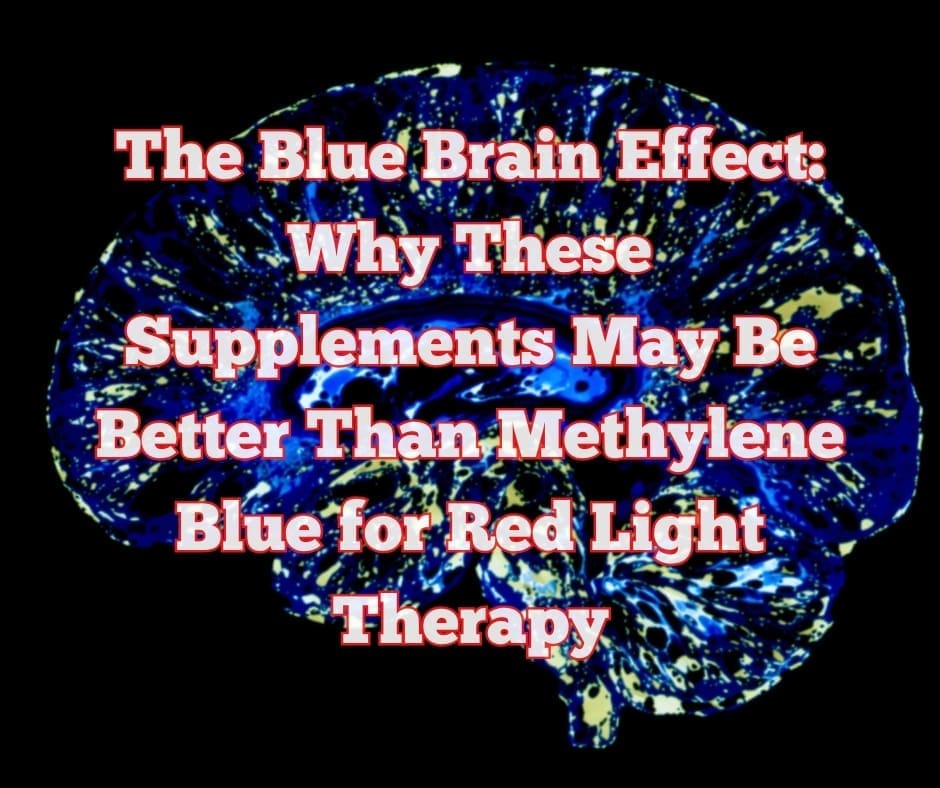
Two plant-based products, StemEnhance Ultra and Cyactiv, may offer similar or even superior benefits to MB, thanks to their rich content of phycocyanins.
The Shocking Truth Behind Methylene Blue
Methylene Blue works. There’s no denying it. It boosts ATP, enhances brain clarity, and acts as a mild photosensitizer, meaning it helps your body absorb and benefit from red and near-infrared light.
But MB has its drawbacks. It is, after all, a synthetic dye. Stories like the “blue brain autopsy” (a report of long-term MB accumulation visibly staining brain tissue) may not be harmful in a medical sense, but they do leave a lasting visual impression—and raise fair questions about long-term use.
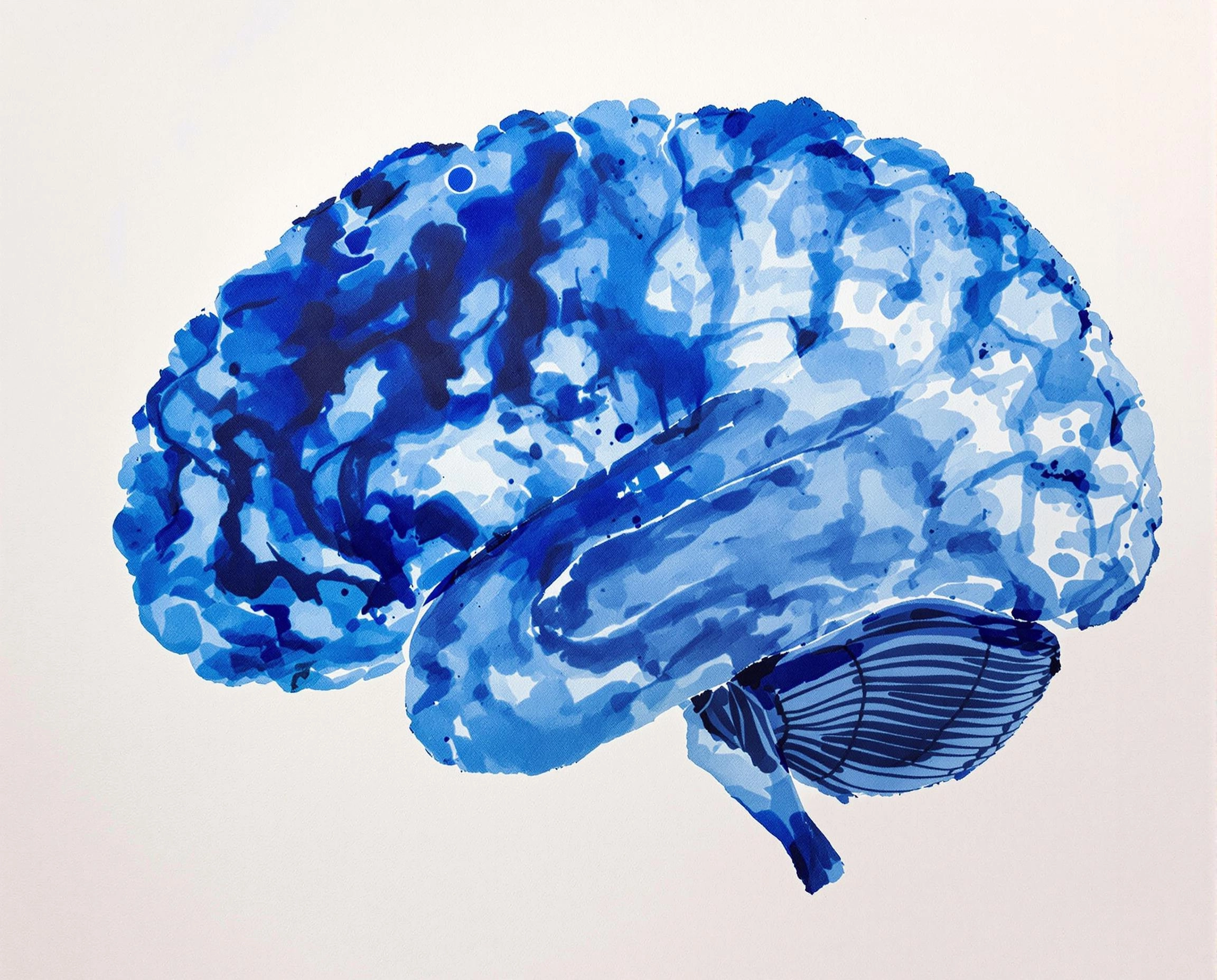
Enter Phycocyanin: The Natural Blue Alternative
Phycocyanin is the blue pigment found in Spirulina and Aphanizomenon flos-aquae (AFA) algae. It is:
- A natural photosensitizer, amplifying light energy similar to MB.
- A powerful mitochondrial enhancer, boosting energy production.
- A potent anti-inflammatory, inhibiting COX-2 and reducing cytokine activity.
- A free radical scavenger, helping reduce oxidative stress.
- Neuroprotective, with early research showing promise for cognitive and neural support.
This makes it a perfect companion to Red Light Therapy — or even a standalone wellness enhancer.
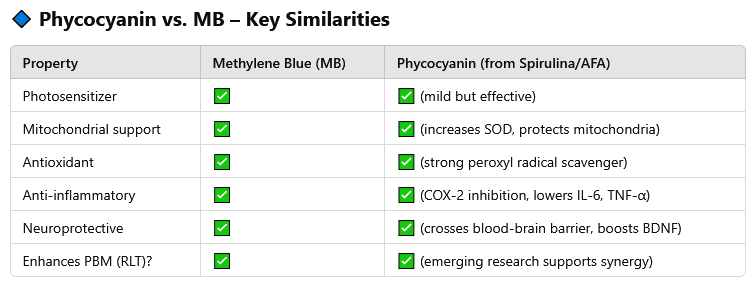
Why StemEnhance Ultra + Cyactiv May Be Better Than MB
Cyactiv focuses more on inflammation control, offering a concentrated dose of phycocyanin to support cellular health and recovery.
Together, they offer:
- Photosensitizing power without synthetic dyes
- Full-body systemic benefits beyond brain and energy
- Stem cell support, something MB does not offer
- Food-based safety, with long-term use in mind
RLT + Blue: What You Might Feel
Users combining RLT with MB or phycocyanin-rich supplements often report:
- Sharper focus and mental clarity
- Improved skin tone and glow
- Faster recovery from workouts or injury
- A calm but energized mood
Personally, I’ve felt the difference. On MB days, there’s a distinct uptick in creative output. But with StemEnhance Ultra and Cyactiv, the experience feels smoother, more holistic, and sustainable.
FAQ – Phycocyanin and Red Light Therapy: A Natural Synergy
The Phycocyanin & Red Light Therapy Synergy: A Comprehensive Study Guide
Study Guide
This study guide is designed to help you review and deepen your understanding of the provided source materials concerning phycocyanin, methylene blue, and their interaction with red light therapy.
I. Key Concepts & Principles
- Phycocyanin:
- Definition and natural origin (algae like Spirulina and Aphanizomenon flos-aquae).
- Role in photosynthesis.
- Mechanism of action: natural photosensitizer, mitochondrial enhancer, anti-inflammatory, free radical scavenger, neuroprotective, antibacterial, antiproliferative.
- Relationship with red light: enhanced production and fluorescence intensity, facilitated leaching.
- Methylene Blue (MB):
- Definition and synthetic origin (petroleum-derived dye).
- Historical and current medical uses.
- Mechanism of action: boosts ATP, enhances brain clarity, mild photosensitizer.
- Concerns and drawbacks: synthetic nature, xenobiotic, long-term accumulation (e.g., “blue brain autopsy”), documented adverse effects (serotonin syndrome, hemolytic anemia, neurotoxicity, cardiovascular effects).
- Toxicity comparison with phycocyanin (LD50).
- Red Light Therapy (RLT) / Photobiomodulation (PBM):
- General concept of enhancing cellular function using light.
- Synergistic relationship with photosensitizers (phycocyanin, MB).
- Reported user benefits when combined with “blue” enhancers: sharper focus, mental clarity, improved skin, faster recovery, calm/energized mood.
- Comparison of Phycocyanin and Methylene Blue:
- Similarities: both act as photosensitizers and mitochondrial enhancers, with overlapping absorption/emission peaks.
- Differences: natural vs. synthetic origin, safety profile, broader systemic benefits of phycocyanin (e.g., stem cell support), food-based safety vs. xenobiotic concerns.
- Specific Phycocyanin-rich Products:
- StemEnhance Ultra: Combines AFA blue-green algae, Spirulina extracts, and sea buckthorn; designed for stem cell mobilization, tissue repair, systemic rejuvenation.
- Cyactiv: Concentrated phycocyanin for inflammation control and cellular health.
- Their role as natural, food-based alternatives for RLT enhancement.
II. Research Findings & Evidence
- Sivasankari et al. (2021) study:
- Red LED light and urea enhance phycocyanin’s fluorescence and purity in Spirulina cultivation.
- Red light facilitates phycocyanin leaching without complex cell disruption.
- RL-grown phycocyanin shows pronounced antibacterial activity, higher hydrogen peroxide scavenging activity, and strong antiproliferative activity against HeLa cancer cells.
- Forensic Science, Medicine and Pathology study (“Fifty shades of green and blue…”):
- Documents MB’s strong affinity for biological tissues, leading to pronounced blue-green discoloration of organs (brain, heart) post-mortem after systemic administration.
- Raises questions about biodistribution and long-term functional consequences.
- Sayer Ji’s perspective:
- Critiques MB as a synthetic xenobiotic with unstudied long-term effects.
- Advocates for phycocyanin as a safer, natural alternative based on its biocompatibility and high safety profile (higher LD50).
III. Practical Applications & Recommendations
- Using phycocyanin-rich supplements (StemEnhance Ultra, Cyactiv) to naturally enhance RLT benefits.
- Prioritizing natural, food-based alternatives over synthetic compounds based on the precautionary principle.
- Understanding the “dose makes the poison” vs. “even at low doses” paradigm for synthetic chemicals.
- Resource for RLT information and product acquisition: redlighttherapy.rehab.
Essay Format Questions
- Compare and contrast the mechanisms of action, origins, and safety profiles of phycocyanin and methylene blue. Discuss why phycocyanin is presented as a “natural alternative” and evaluate the validity of this claim based on the provided sources.
- Analyze the role of red light in enhancing both the production and therapeutic efficacy of phycocyanin. How does this interaction simplify the extraction process and what are the implications for its broader application in health?
- Discuss the “precautionary principle” in the context of choosing between synthetic compounds like methylene blue and natural alternatives like phycocyanin for health supplements. Use specific examples from the texts to support your argument regarding the importance of long-term safety studies.
- Evaluate the various health benefits attributed to phycocyanin as detailed in the sources. How might these benefits, in conjunction with red light therapy, contribute to a holistic approach to wellness and recovery?
- Critically assess the concerns raised about methylene blue, including its documented adverse effects and the phenomenon of “blue brain autopsy.” To what extent do these concerns justify the recommendation for individuals to seek natural alternatives for enhancing red light therapy?
Quiz
Xenobiotic: A chemical substance that is foreign to the biological system; generally, artificial substances that are not naturally produced or expected to be present in an organism.
Aphanizomenon flos-aquae (AFA): A type of blue-green algae, along with Spirulina, that is a natural source of phycocyanin.
Antibactericidal Activity: The ability of a substance to kill or inhibit the growth of bacteria.
Anti-inflammatory: A substance or treatment that reduces inflammation in the body.
Antiproliferative Activity: The ability of a substance to inhibit or slow down the proliferation (growth and division) of cells, often tested against cancer cell lines.
ATP (Adenosine Triphosphate): The main energy currency of the cell, crucial for various cellular processes.
Biohackers: Individuals who apply a systems-thinking approach to their own biology, using various methods to optimize their body and mind.
C-Phycocyanin (C-PC): A specific type of phycocyanin often studied for its health benefits.
Chromatography: A laboratory technique for the separation of a mixture, often used to purify substances like phycocyanin.
COX-2 (Cyclooxygenase-2): An enzyme that plays a key role in the formation of prostaglandins, which are involved in inflammation. Inhibiting COX-2 can reduce inflammation.
Cyanobacteria: A phylum of bacteria that obtain their energy through photosynthesis; often referred to as blue-green algae. Spirulina is a well-known example.
Cytokine Activity: The action of cytokines, which are signaling molecules that mediate and regulate immunity, inflammation, and hematopoiesis (blood cell formation).
Cyactiv: A plant-based product mentioned in the sources that provides a concentrated dose of phycocyanin for inflammation control and cellular health.
Fluorescence Intensity: The measure of the amount of light emitted by a fluorescent substance after it has absorbed light. Increased intensity indicates more light absorption and emission.
Free Radical Scavenger: A substance that can neutralize free radicals, which are unstable molecules that can cause oxidative stress and damage to cells.
G6PD (Glucose-6-Phosphate Dehydrogenase) Deficiency: A genetic condition that can lead to hemolytic anemia (destruction of red blood cells) when exposed to certain substances, including methylene blue.
HeLa Cancer Cell Line: A widely used immortal cell line in scientific research, originally derived from cervical cancer cells, used for in vitro studies.
Hemolytic Anemia: A condition in which red blood cells are destroyed faster than they can be made, leading to anemia.
Hydrogen Peroxide Scavenging Activity: The ability of a substance to neutralize hydrogen peroxide, a reactive oxygen species that can cause oxidative damage.
LD50 (Lethal Dose 50): The amount of a substance that causes death in 50% of the test population, often used as an indicator of acute toxicity.
Mitochondrial Enhancer: A substance that improves the function of mitochondria, the “powerhouses” of cells responsible for energy production (ATP).
Methylene Blue (MB): A synthetic, petroleum-derived dye historically and currently used for various medical purposes, also explored as a nootropic and red light therapy enhancer.
Near-Infrared Light (NIR): A portion of the electromagnetic spectrum with wavelengths longer than visible red light, often used in photobiomodulation.
Neuroprotective: Having the ability to protect neurons (nerve cells) from damage, degeneration, or dysfunction.
Oxidative Phosphorylation: The metabolic pathway in which cells use enzymes to oxidize nutrients, thereby releasing energy to produce ATP.
Oxidative Stress: An imbalance between the production of free radicals and the ability of the body to counteract or detoxify their harmful effects through neutralization by antioxidants.
Phycobilisomes: Light-harvesting antenna complexes of cyanobacteria and red algae, which contain phycocyanin and other phycobiliproteins.
Phycocyanin: A naturally occurring blue pigment-protein found in certain algae (Spirulina, AFA) that plays a role in photosynthesis and has various health benefits.
Photosensitizer: A substance that increases the sensitivity of a material to light, often used to enhance the effects of light therapy by absorbing light and transferring its energy.
Photobiomodulation (PBM): A therapeutic technique that uses low-level laser or LED light to stimulate cell function and promote healing; also known as red light therapy.
Precautionary Principle: A widely accepted principle that states if a technology or activity has the potential to cause harm, especially to human health or the environment, then precautionary measures should be taken even if cause-and-effect relationships are not fully established scientifically.
Red LED (Light-Emitting Diode): A type of light source that emits light in the red spectrum, used in the study for cultivating Spirulina and for red light therapy.
Red Light Therapy (RLT): A therapeutic technique using red and sometimes near-infrared light to improve cellular function, reduce inflammation, and promote healing.
Serotonin Syndrome: A potentially life-threatening drug reaction caused by excessive serotonin activity in the central nervous system, which can be triggered by methylene blue when combined with certain medications.
Spirulina (Spirulina platensis): A type of cyanobacteria (blue-green algae) widely cultivated and consumed as a superfood, known for its high nutritional content and as a primary source of phycocyanin.
StemEnhance Ultra: A plant-based product mentioned in the sources, combining AFA blue-green algae, Spirulina extracts, and sea buckthorn, designed to mobilize adult stem cells.
Urea: A nitrogen-containing compound used as a nitrogen source for the cultivation of Spirulina in the study.
Final Thoughts
Methylene Blue is powerful, but it’s not the only blue game in town. If you’re seeking a natural, regenerative, food-based alternative with a broader range of benefits—especially when paired with Red Light Therapy—StemEnhance Ultra and Cyactiv deserve a closer look.
Blue doesn’t have to mean synthetic.
Sometimes, nature does it better.
🎧 Want the full story?
Dive deeper with our exclusive podcast, crafted from this article and the featured study. It breaks things down in a clear, engaging way — perfect for listening on the go.
👉 Watch below or listen now — and if it brings you value, hit like or subscribe to stay updated.
Ready to experience the synergy? Explore StemEnhance Ultra and Cyactiv here and level up your RLT practice—naturally.
Resources: Efficacy of red light for enhanced cell disruption and fluorescence intensity of phycocyanin
